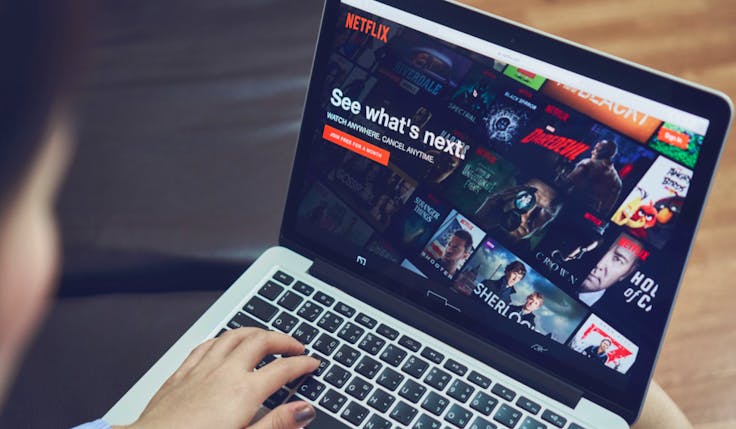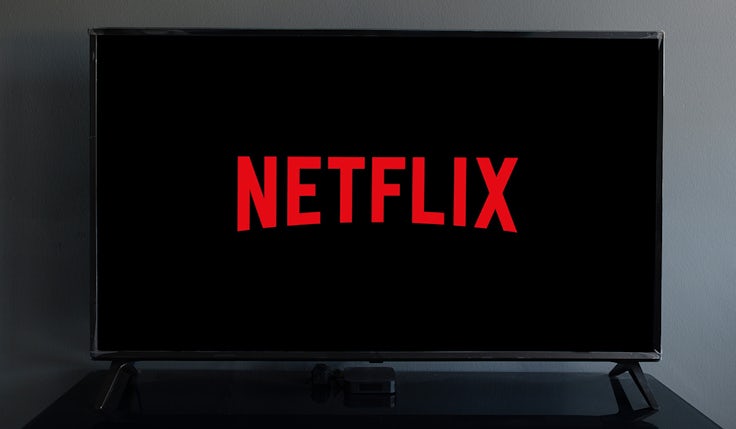New media platforms shouldn’t play by old media rules
Data suggests creating assets specifically for each channel is more effective than repurposing them, so podcasts and streaming platforms shouldn’t look to radio and TV for their ad formats.
 Two-and-a-bit years ago, I was preparing for a talk in Iceland. I woke up in a hotel in Reykjavik with the usual winning combination of hangover/jetlag/exhaustion and went downstairs to find some coffee. On the way down, I spotted a big Viking dude standing outside with a cigarette. Those fucking Nordics are so good-looking they make smoking look healthy and pure.
Two-and-a-bit years ago, I was preparing for a talk in Iceland. I woke up in a hotel in Reykjavik with the usual winning combination of hangover/jetlag/exhaustion and went downstairs to find some coffee. On the way down, I spotted a big Viking dude standing outside with a cigarette. Those fucking Nordics are so good-looking they make smoking look healthy and pure.
And, in a manner that surprised me at the time, I walked straight outside and asked him for a fag. He was happy for the company. And we stood together contemplating the morning snow, the mountains around the Breidha fjord, and beyond to the Greenland Sea. Eventually, he gave me a pat of his giant hand and went inside. I stood there alone for 10 minutes. Touching the snow, breathing the air and enjoying the existential pleasure of being somewhere strange.
Talk done, I headed to the airport. By the time I got home, Covid had become The Topic. Within a week, travel and meetings and life as we knew it had been abandoned. I remember taking off my watch and putting it away because, for the foreseeable future, such things were unnecessary. Instead, I took a little maroon beaded necklace I’d bought for my wife, which she had never worn, and wrapped it three times around my left wrist. I called it my ‘Covid bangle’ and never took it off.
The big question was never whether Netflix would advertise, but what kind of advertising model it would implement.
Last week I slipped off my Covid bracelet and went to find my watch. I’d been in Melbourne and Sydney and been suddenly overcome with the realisation we were officially living in a post-Covid world.
I know, I know. That is a medically incorrect observation. Covid has never been more contagious or more prevalent. But, damn it Jim, I’m a marketer not a doctor! Our perception of Covid, our culture, our way of living has moved on. Virus or not.
I was in Sydney for a big event for LiSTNR, the digital arm of Australian media company SCA. The company was promoting a raft of big podcast shows to advertisers and, for some reason, they had invited me to the fancy dinner with all the talent and senior executives. It was my first industry schmooze in almost three years and I enjoyed every glass of it.
Mark Ritson to headline Marketing Week’s Festival of Marketing
Podcasts aren’t radio
At one point, a particularly serious, familiar-looking media executive looked across the table and asked: “What are you doing here?” I was a bit taken aback and, as I contemplated the question, I realised I did not have much of an answer. I stammered something about writing a column about podcasts.
He ruminated on my answer for what felt like about five minutes and then said: “I look forward to it.” Fuck, I thought, I’m actually going to have to write something because this wanker is going to check up on me.
Are you one of the SCA execs, I asked him meekly? He paused again. “Me?” he exclaimed. “Nah mate,” he laughed, “I’m Howie.”
And then it all started to fall into place. This was Mark Howard, famed Aussie sporting commentator and official holder of the World’s Most Australian Looking and Sounding Bloke award, nine years running. Howie presents the Howie Games, which is a massive podcast for anyone who likes sport in Australia. He was one of the “audio celebrities” rolled out for the event and was also the only person at the dinner drinking more Chablis per minute than me, so we quickly fell into a very enjoyable conversation – or ‘convo’ as we call it Down Under.
[It’s] about recognising that linear TV’s ad model was built in the 1950s for a different kind of consumer, using a different kind of technology, in very different settings and for very different brands.
One moment really stayed with me. Howie knows “fuck all” about marketing, but he is a smart bloke and a bit of a podcasting pioneer. And he was struggling with the idea that radio ads had any place in commercial podcasting. His point was that, whenever his podcast included ads that had been built for radio, they felt wrong to him. “What,” he wanted know, “do marketers think?”
And it’s an interesting, seldom-asked question. Most marketers know the potency of spreading their media dollars across multiple channels. But the temptation to save time, money and effort by reusing the same video execution that was built for TV on YouTube, or reusing print ads for digital ends, is all too often the most common approach.
I told Howie about some interesting data I had seen from Analytic Partners years before. The data, shown below, suggests that when you create your own dedicated, native content for digital video, it’s likely to be three times more effective than TV creative that’s been repurposed for digital channels.

By extension, Howie’s theory that radio ads should stay on radio and podcasts should develop their own format does stand up to scrutiny. The only example my Chablis-soaked brain could give him on the night was the old Russell Brand podcast from a decade ago.
The controversial comic was one of the first celebrities – alongside faithful co-presenter Matt Morgan- to successfully segue into podcasting. In 2015 he took his show to AudioBoom and – for the first time – advertising from brands like Audible and Visit Las Vegas funded the show.
In a bold move, the advertising messages were read live by Morgan. Inevitably, given it was Russell Brand and the whole point of his show was to riff off anything into dodgy, occasionally super-dodgy territory, he took the opportunity to mercilessly piss-take almost every single sponsor that attempted to promote itself on his podcast. As the series wore on it became clear that many of the brands were clearly uncomfortable with this skewering.
Five trends that will reshape media in 2022
Much to the hilarity of Brand, Morgan was charged with keeping the irascible host from going off script during the advertising announcements, thus ensuring Brand took the piss even more. And rendering the advertising in the show ever more hilarious.
Despite the apparent discomfort of some of the advertisers, there was something astonishing about the way Brand dissected, redirected and inverted each ad. If you were an untrained, unthinking marketing director, his approach would have been cause for enormous concern. Most dumb marketers seek consistency – control at the expense of any proper impact on the market.
Rather than trying to better this 80-year-old [TV] model, Netflix needs to ignore it.
But if you properly understood marketing, there was a lot to like about Brand’s approach. For starters, what was meant to be a one-minute announcement often turned into a five-minute profanity-laden adventure. And while it was dangerous territory, each brand was granted a massive salience multiplier, as Morgan gamely tried to get through each advertising message while Brand bombarded him with innuendo and argument, around and underneath each message.
Ironically, given Brand’s anticommercial agenda, his ambushes dragged the ads from the periphery of the show into its molten red center. Promotional nirvana, in other words.
And it proves Howie’s point. Because those insanely electric advertising takedowns would have been unlikely in the more stilted, controlled environment of radio. It suggests that, while marketers should aim for cross-channel campaign synergy, they should do so with distinctly created assets that are natively designed for each specific medium.
Streaming is not TV
And that takes us to Netflix, and the biggest moment in advertising next year. As you almost certainly already know, the streaming giant is poised to split itself into two tiers in early 2023 – a premium-priced service much like the one it currently runs, and a lower-priced, ad-supported tier. And Netflix will certainly not be the last streaming company to take this route, as other giants like Disney+ turn their attention from customer recruitment to profits.
The big question was never whether Netflix would advertise, but what kind of advertising model it would implement. CEO Reed Hastings has spoken frequently of a “better-than-linear-TV advertisement model that is more seamless and relevant for consumers, and more effective for advertising partners”. But, with respect, I think that statement is wrong headed.
Netflix: Stranger Things success proves ‘effectiveness’ of marketing strategy
It’s not about being “better” than linear TV. It’s about being different. About recognising that linear TV’s ad model was built in the 1950s for a different kind of consumer, using a different kind of technology, in very different settings and for very different brands. Rather than trying to better this 80-year-old model, Netflix needs to ignore it. The company should step back and invent a native form of advertising that only it could operate and monetise.
Perhaps it’s a single brand sponsor across the platform every day. Or every week. Maybe it means multiple skippable messages before the show begins. Or a mid-programme break with a single 90-second targeted ad that allows viewers to do something useful like grab a drink. I’m making all of this up, of course. I have no specific idea what Netflix should do. Other than something that cinema, TV and YouTube wouldn’t. Maybe Howie can give them some advice.
You can expect more wit and wisdom from Mark Ritson at Marketing Week’s Festival of Marketing on 6 October. This year’s event theme is growing brands, businesses and careers. For more information and to buy your ticket visit the Festival website.








Comments